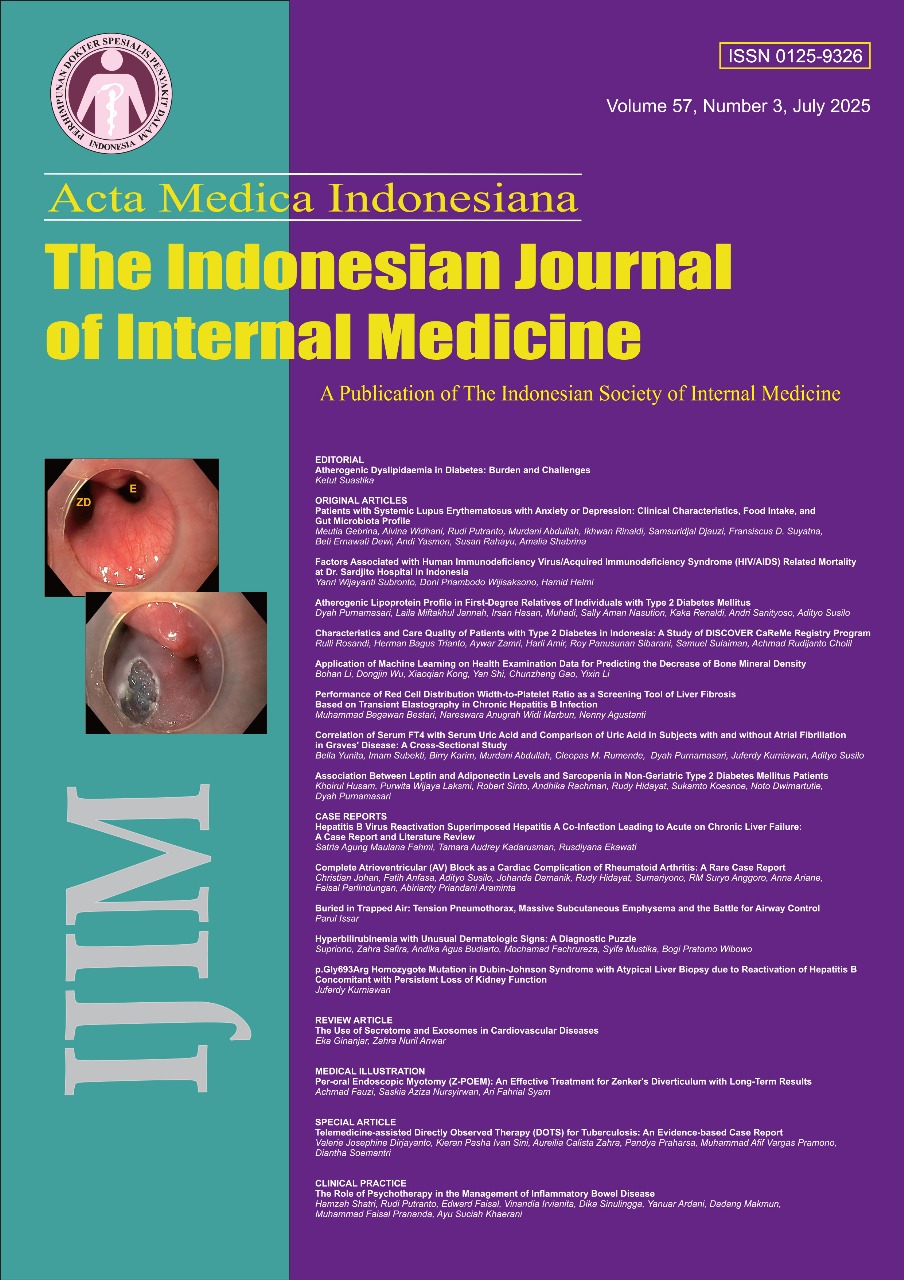Per-oral Endoscopic Myotomy (Z-POEM): An Effective Treatment for Zenker's Diverticulum with Long-Term Results
Keywords:
gastroenterology, endoscopy, third space endoscopy, endoscopic myetomy, Zenker's diverticulumAbstract
Zenker's diverticulum (ZD) arises from impaired cricopharyngeal (CP) muscle distensibility during deglutition (swallowing), leading to a clinical presentation characterised by dysphagia, regurgitation, aspiration, cough, and potential weight loss. The definitive treatment for ZD is a CP myotomy. Traditionally, open surgical approaches (transcervical diverticulectomy, diverticulopexy, or diverticular inversion) with or without concomitant CP myotomy and rigid endoscopic techniques utilizing stapling or CO2 laser therapy have been employed. However, these interventions are often associated with significant morbidity and mortality, particularly in the elderly and comorbid ZD patient population. The advent of flexible endoscopic ZD treatment has revolutionized the therapeutic landscape, rapidly becoming the preferred first-line modality for the management of small to moderate-sized diverticula. The past decade has witnessed the emergence of a multitude of novel techniques within the realm of flexible endoscopic ZD treatment. In this medical illustration, we report a woman, 64-years-old with Zenker’s diverticulum treated with Z-POEM. She came to our clinic with dysphagia and regurgitation for 6 months prior. Diagnostic gastroscopy showed ZD of 3 cm, located 18 cm from incisors with a thick septal muscle. A triangle-shaped knife created a 2-cm mucosal incision, and submucosal tunneling was made by spray coagulation. The gastroscope was advanced through the submucosal space of the esophageal lumen and the diverticulum site until the bottom of the diverticulum. The septal muscle was completely cut, immediately allowing the gastroscope to pass through easily, and the mucosal defect was closed with hemoclips. Six months after the treatment, the patient no longer experiences dysphagia and regurgitation. Z-POEM offers a precise approach to treating Zenker's diverticulum by providing a complete visualization of the entire septal muscle. This comprehensive view minimizes the risk of incomplete myotomy, ensuring a more effective treatment.References
Ishaq S, Sultan H, Siau K, Kuwai T, Mulder CJ, Neumann H. New and emerging techniques for endoscopic treatment of Zenker's diverticulum: State-of-the-art review. Digestive endoscopy: official journal of the Japan Gastroenterological Endoscopy Society. 2018;30(4):449-60.
Zhang LY, Nieto J, Ngamruengphong S, Repici A, Khashab MA. Zenker's diverticulum: advancing beyond the tunnel. VideoGIE: an official video journal of the American Society for Gastrointestinal Endoscopy. 2021;6(12):562-7.
Bhatt NK, Mendoza J, Kallogjeri D, Hardi AC, Bradley JP. Comparison of surgical treatments for zenker diverticulum: A systematic review and network meta-analysis. JAMA otolaryngology-- head & neck surgery. 2021;147(2):190-6.
Porziella V, Zanfrini E, Tabacco D, et al. Surgical treatment of Zenker diverticula. 2021. 2021;6.
Mandarino FV, Vespa E, Barchi A, et al. Precision endoscopy in peroral myotomies for motility disorders of the upper gastrointestinal tract: Current insights and prospective avenues-a comprehensive review. Life (Basel, Switzerland). 2023;13(11).
Swei E, Pokala SK, Menard-Katcher P, Wagh MS. Comparison of Zenker's per-oral endoscopic myotomy (Z-POEM) with standard flexible endoscopic septotomy for Zenker's diverticulum: a prospective study with 2-year follow-up. Surgical endoscopy. 2023;37(9):6818-23.
Downloads
Published
How to Cite
Issue
Section
License
Copyright (c) 2025 Achmad Fauzi, Saskia Aziza Nursyirwan, Ari Fahrial Syam

This work is licensed under a Creative Commons Attribution 4.0 International License.
Copyright
The authors who publish in this journal agree to the following requirements:
- Authors retain copyright and grant the journal right of first publication with the work simultaneously licensed under a Creative Commons Attribution 4.0 International License (CC BY 4.0) that allows others to share the work with an acknowledgement of the work's authorship and initial publication in this journal.
- Authors can enter into separate, additional contractual arrangements for the non-exclusive distribution of the journal's published version of the work (e.g., post it to an institutional repository or publish it in a book), with an acknowledgement of its initial publication in this journal.
- Authors are permitted and encouraged to post their work online (e.g., in institutional repositories or on their website) before and during the submission process, as it can lead to productive exchanges, as well as earlier and greater citation of published work. (See The Effect of Open Access)
Privacy Statement
The names and email addresses entered in this journal site will be used exclusively for the stated purposes of this journal and will not be made available for any other purpose or to any other party.




